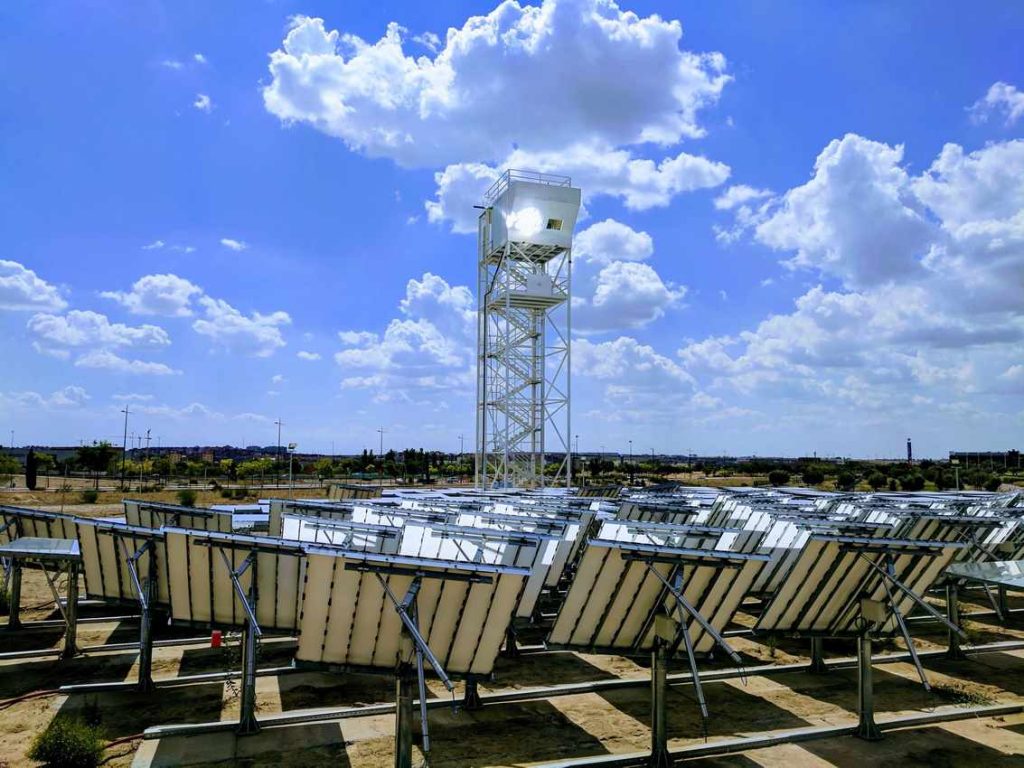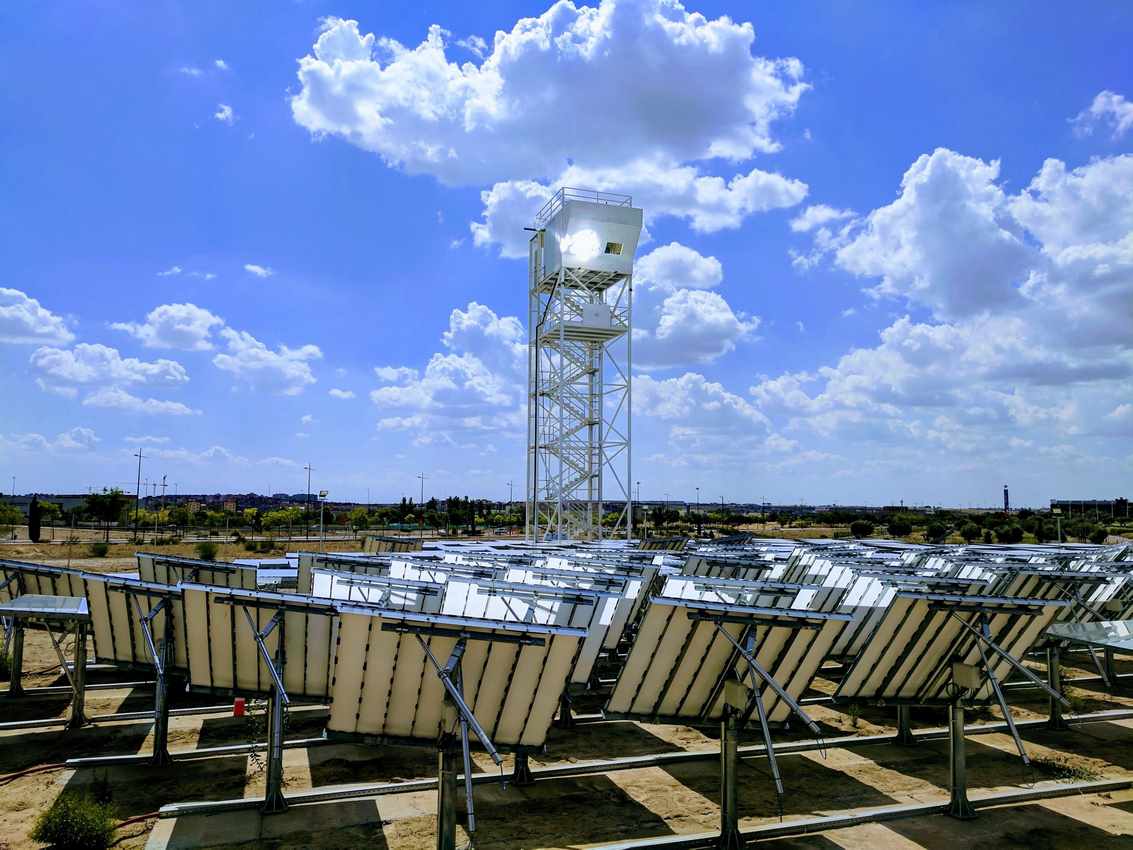
A carbon-neutral synthesis of kerosene, or jet fuel, has been produced by scientists, made by combining sunlight with water.
5% of human emissions are generated through kerosene use in aviation, which currently has no alternative for long haul jetting.
It consists of 169 sun-tracking reflective panels that redirect and concentrate solar radiation into a solar reactor on top of a tower built at IMDEA Energy Institute in Madrid back in 2017.
The concentrated solar energy then drives oxidation-reduction (redox) reaction cycles in the solar reactor, in which a porous structure converts water and carbon dioxide injected into the reactor into syngas, which is made of hydrogen and carbon monoxide.
The syngas is then sent into a gas-to-liquid converter where it is finally processed into liquid hydrocarbon fuels that include kerosene and diesel.
The fuel will be even greener if the team can capture carbon dioxide from the air in the not-too-distant future and use it in the fuel.
RELATED: Carbon-Negative Plant Opens in Turkey Turning Algae Into Bio-Jet Fuel and So Much More
“The amount of CO2 emitted during kerosene combustion in a jet engine equals that consumed during its production in the solar plant,” said Aldo Steinfeld, a professor from ETH Zurich and author of the paper. “That makes the fuel carbon neutral, especially if we use CO2 captured directly from the air as an ingredient, hopefully in the not-too-distant future.”
Watch this Reuters news video about the breakthrough… (GNN is not affiliated with any ads showing below)
The solar-made kerosene, or jet fuel, is fully compatible with the existing way fuel is stored, distributed, and used in a plane’s engine. It can also be blended with fossil-derived kerosene, the team say.
“With our solar technology, we have shown that we can produce synthetic kerosene from water and CO2 instead of deriving it from fossil fuels,” said Steinfeld, adding that they are the first to demonstrate the entire thermochemical process chain from water to kerosene.
During a nine-day run of the plant reported in the paper published in Joule, the solar reactor’s energy efficiency—the portion of solar energy input that is converted into the energy content of the syngas produced—was around 4%.
Steinfeld says his team is working intensively on improving the design to increase the efficiency to values over 15%. For example, they are exploring ways to optimize the porous structure for absorbing solar radiation and developing methods to recover the heat released during the redox cycles.
“This solar tower fuel plant was operated with a setup relevant to industrial implementation, setting a technological milestone towards the production of sustainable aviation fuels.”
CONVERT This Story Into A Social Media Post For Spreading Good News…




















